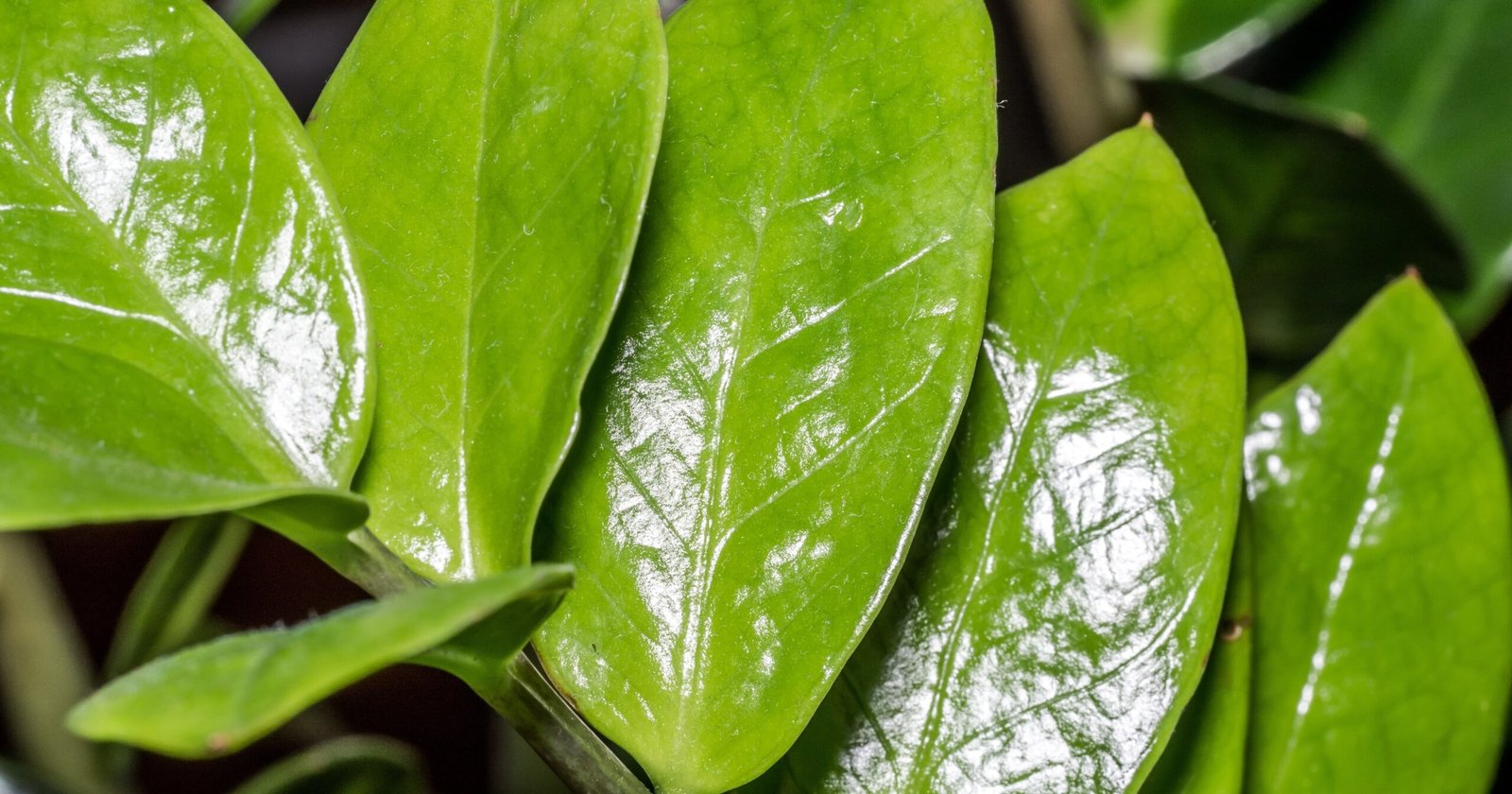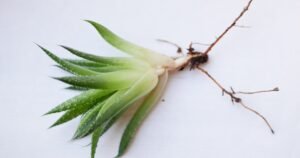Plants with thick, waxy leaves, also known as succulents, are a group of plants that have adapted to survive in arid conditions where water is scarce.
- Jade plant
- Dracaena trifasciata
- Dumb canes
- Zanzibar Gem
- Mistletoe fig
Their leaves are glossy and waxy because they are coated with a layer of natural wax that helps retain water and prevents drying.
Such plants include Aloe Vera, Jade Plant, Echeveria, and Agave. Gardeners and plant enthusiasts often favor these plants for their low-maintenance needs and unique aesthetic appeal.
Introduction
Plants with thick waxy leaves are a remarkable example of nature’s adaptability and resilience.
These plants possess a unique feature—their leaves are covered in a thick layer of wax or a waxy cuticle, which serves various purposes, including protection, water conservation, and adaptation to challenging environmental conditions.
In this comprehensive exploration, we will delve into the characteristics, functions, and notable examples of plants with thick waxy leaves, shedding light on the significance of this remarkable adaptation.
Characteristics and Functions
Plants with thick, waxy leaves, commonly called succulents, exhibit several distinctive characteristics that have evolved as survival tactics in arid climates.
The hallmark trait of these plants is their waxy, fleshy leaves that act as water storage tanks.
This wax coating, known as the cuticle, is waterproof and a barrier against insects, bacteria, and fungi.
Moreover, the cuticle helps regulate gas exchange, allowing these plants to endure high temperatures and low humidity levels while minimizing water loss.
The thick, juicy leaves also play a part in photosynthesis, enabling these plants to thrive despite a limited water supply.

Understanding Thick Waxy Leaves
1. Leaf Structure and Composition
- Main Point: Plants with thick waxy leaves have an outer layer, known as the cuticle, composed of a waxy substance, often called cutin.
- This waxy layer forms a waterproof barrier on the leaf surface.
2. Composition of the Wax
- Main Point: The wax on the leaves is composed of various complex molecules, including long-chain fatty acids, aldehydes, and alkanes.
- These components contribute to the water-repellent properties of the waxy layer.
3. Development and Growth
- Main Point: The production and development of the wax layer on leaves are regulated by environmental factors, genetics, and plant physiology.
- It’s a dynamic process influenced by the plant’s adaptation to its surroundings.

Functions and Benefits of Thick Waxy Leaves
1. Water Conservation
- Main Point: The thick waxy layer on the leaves acts as a waterproof barrier, significantly reducing water loss through transpiration.
- This adaptation is especially vital for plants with scarce water in arid or semi-arid regions.
2. Protection from Environmental Stress
- Main Point: The waxy layer offers protection against harsh environmental conditions such as extreme temperatures, strong winds, and UV radiation.
- It shields the plant from excess sunlight and helps prevent damage to the leaf cells.
3. Prevention of Pathogen and Pest Attacks
- Main Point: The waxy cuticle and specialized structures on the leaf surface create a physical barrier that makes it difficult for pathogens and pests to penetrate the plant, reducing the risk of infections and infestations.
4. Aid in Photosynthesis
- Main Point: The waxy layer plays a role in optimizing the amount of light reaching the chloroplasts within the leaf cells, thus enhancing photosynthesis, which is crucial for the plant’s growth and energy production.

Notable Plants with Thick Waxy Leaves
1. Echeveria
- Main Point: Echeveria is a genus of succulent plants known for their rosette-shaped clusters of thick, fleshy leaves covered in a waxy cuticle.
- They are popular in arid and semi-arid regions due to their water storage capabilities.
2. Hoya Carnosa (Wax Plant)
- Main Point: Hoya Carnosa, commonly known as the Wax Plant, has thick, waxy leaves.
- This popular houseplant is appreciated for its unique, waxy foliage and fragrant flowers.
3. Agave
- Main Point: Agave plants, known for their role in producing tequila, have thick, succulent leaves with a waxy surface.
- This adaptation allows them to store water and survive in arid desert conditions.
4. Jade Plant (Crassula ovata)
- Main Point: The Jade Plant is a common succulent houseplant with thick, fleshy leaves covered in a waxy cuticle.
- Its glossy appearance and water-storing ability make it popular among succulent enthusiasts.
Ecological Significance and Adaptation
1. Arid and Semi-Arid Environments
- Main Point: Plants with thick waxy leaves are often found in arid and semi-arid regions where water is scarce.
- Their ability to retain water and minimize water loss through specialized leaf structures is a crucial adaptation for survival in these harsh environments.
2. Xerophytes
- Main Point: Plants with thick waxy leaves are categorized as xerophytes, adapted to survive in low-water conditions. The waxy cuticle is a prominent feature of xerophytic plants.
Gardening and Care Tips for Plants with Thick Waxy Leaves
1. Proper Watering
- Main Point: Despite their ability to store water, it’s important not to overwater succulent plants with thick waxy leaves.
- Allow the soil to dry out between waterings to prevent root rot.
2. Indirect Light
- Main Point: Most plants with thick, waxy leaves prefer bright, indirect light.
- Placing them near a window or in a well-lit area indoors ensures they receive adequate light without being exposed to direct sunlight for extended periods.
3. Well-Draining Soil
- Main Point: Use well-draining soil to prevent water from accumulating at the roots, which could lead to root rot.
- Succulents thrive in soil that allows excess water to escape easily.
4. Minimal Fertilization
- Main Point: Succulents and plants with thick waxy leaves typically require less fertilizer.
- Use a balanced, water-soluble fertilizer diluted to half strength during the growing season, usually in spring and summer.
Conclusion
Plants with thick waxy leaves are a marvel of natural adaptation, showcasing how plants have evolved to survive in diverse and challenging environments. The waxy layer on their leaves plays a critical role in water conservation, protection from environmental stress, and prevention of pest and pathogen attacks. Additionally, these plants contribute to the ecological balance, especially in arid regions where water is scarce. Understanding and appreciating the significance of this adaptation can enhance our approach to gardening and the conservation of these remarkable plant species.
FAQs
What plant has very thick leaves?
The Jade Plant (Crassula ovata) is well-known for its thick, fleshy leaves.
This succulent is popular among plant enthusiasts for its water-storing capabilities and glossy, waxy appearance.
The thick leaves are a testament to the plant’s adaptation abilities, allowing it to thrive in arid conditions by minimizing water loss.
What is a vine plant with thick waxy leaves?
The Hoya Carnosa, also known as the Wax Plant, plant with thick waxy leaves is a vine plant recognized for its thick, waxy leaves.
This climbing plant is native to East Asia and Australia and is a favorite among indoor gardeners due to its unique foliage and aromatic, star-shaped flowers.
Its thick leaves aid in water storage, helping it withstand periods of drought.
What are the thick waxy leaves and pink flowers?
The Echeveria ‘Afterglow’ is a beautiful succulent with thick, waxy leaves and striking pink flowers. The leaves are a powdery blue with pink highlights and grow in a rosette pattern.
The plant produces tall plants with thick waxy leaves and arching stalks with clusters of bright, nectar-rich pink flowers that attract hummingbirds.
Its vibrant colors and low-maintenance nature make it a popular choice for rock gardens and containers.
What plant has thick, rubbery leaves?
The Rubber Plant, or Ficus elastica, is known for its thick plant with thick waxy leaves and rubbery leaves.
Native to Southeast Asia, this plant thrives indoors due to its low light and water requirements.
The shiny, dark green leaves can grow up to a foot long, and its robust nature makes it a popular choice among houseplant enthusiasts.











